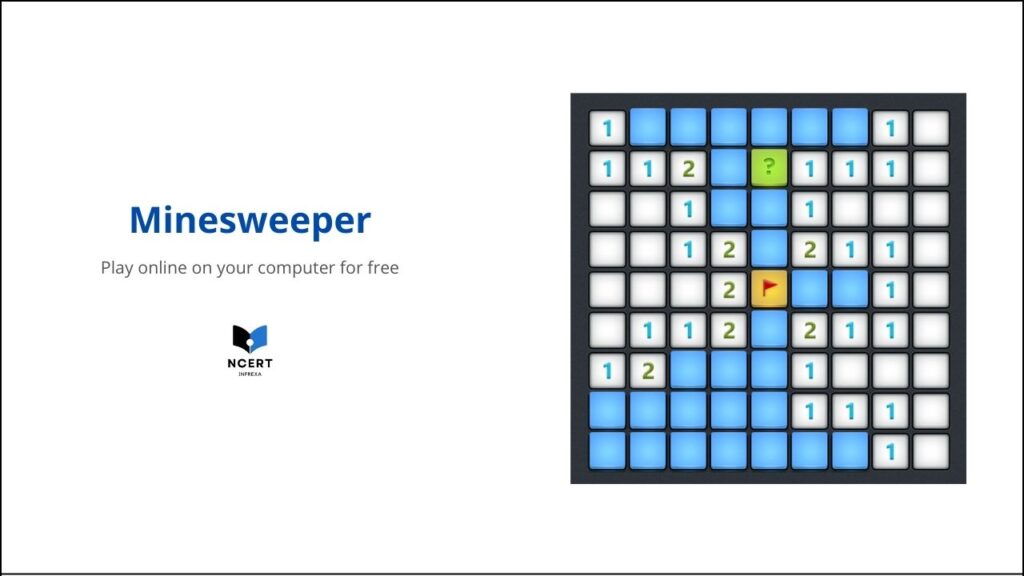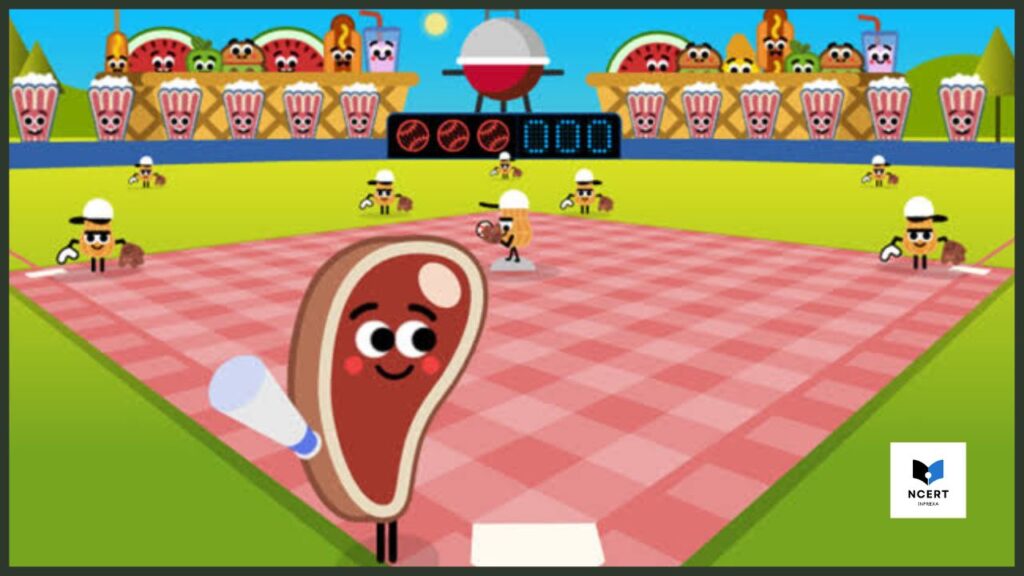Minesweeper is a logic puzzle game where you try to clear a minefield without setting off any hidden explosives. It’s played on a grid, and the rules are simple, but the difficulty comes from deduction under pressure. I’ve played this game for decades, and the core challenge is always the same: figuring out where a bomb is without guessing.
The game uses a standard grid layout, which can vary in size and bomb count. When you start, the board is blank.
Three Basic Actions
There are only three things you need to know how to do on the grid, and they rely on the three mouse buttons (or taps, if you’re on a mobile version):
- Uncovering Squares (Left Click): The main way to play is clicking an unrevealed square with the left mouse button. If the square is safe, it reveals what’s underneath. If you click a mine, the game ends immediately.
- Reading the Numbers: When you uncover a safe square, it often shows a number from 1 to 8. This number is your only clue. It tells you the exact count of mines touching that specific square (including diagonally). A ‘3’, for instance, means exactly three mines occupy the eight squares surrounding it.
- Flagging Mines (Right Click): If your deduction confirms a square holds a mine, you use the right mouse button to place a flag on it. This marks the spot so you don’t accidentally click it later. Experienced players mark every confirmed mine before moving on. You can typically right-click again to place a question mark on squares you’re unsure about, but I usually skip that step as it slows me down.
Gameplay
When you first click the board, you can start anywhere. In almost every modern version of Minesweeper, your very first click is always guaranteed to be safe. The game engine will move any mine that might have been under your starting spot. This allows you to open a safe area without risk.
The best outcome for that first click is revealing a zero. If a square shows a zero, it means none of its surrounding eight squares contain mines. The game then automatically clears all those adjacent safe squares for you, often leading to a chain reaction that uncovers a large section of the grid instantly. This initial cascade gives you your first set of reliable numbers to begin the actual deduction work.
How I Read the Patterns
The key to getting fast at Minesweeper is moving past simply counting and starting to recognize reliable patterns that always guarantee a mine’s location. My biggest early mistake was treating every unknown square as a guess. Once I learned to see the board as a series of interconnected patterns, my win rate skyrocketed.
- The 1-1 Pattern: If you see two ‘1’s adjacent to each other on a flat wall, and the first ‘1’ is only touching one unrevealed square, that square must be the mine. Once you flag it, the second ‘1’ will have satisfied its mine count, and you can safely uncover all other squares touching the second ‘1’.
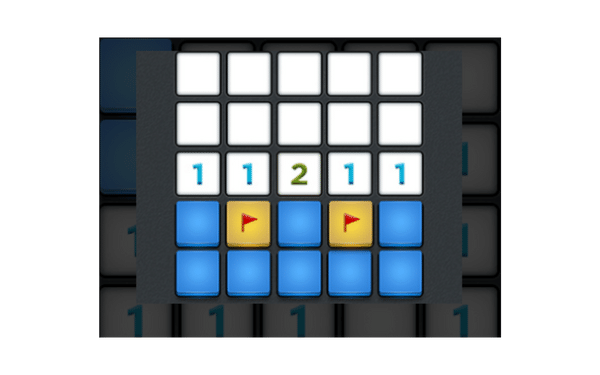
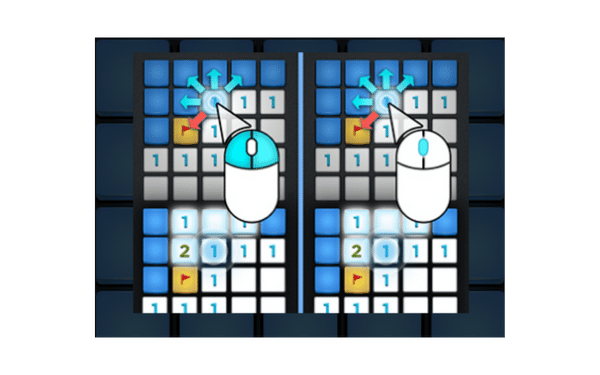
- The 1-2-1 Pattern: This is the most famous and reliable sequence. If you see a ‘1’, then a ‘2’, then another ‘1’ in a line, you can be absolutely certain that there is a mine next to the first ‘1’ and another mine next to the last ‘1’. The ‘2’ is touching both of them. You flag those two spots immediately and then safely clear the remaining squares around the ‘1’s. This pattern is a free pass to uncover a lot of the board.
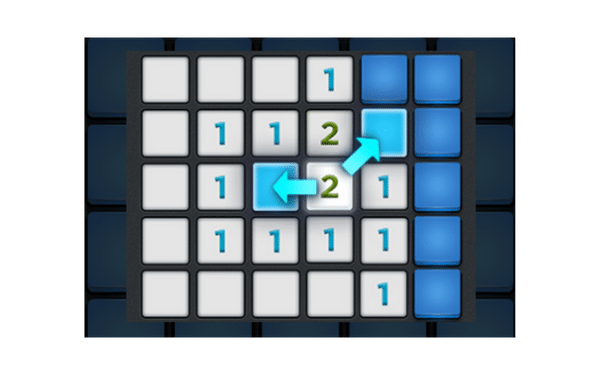
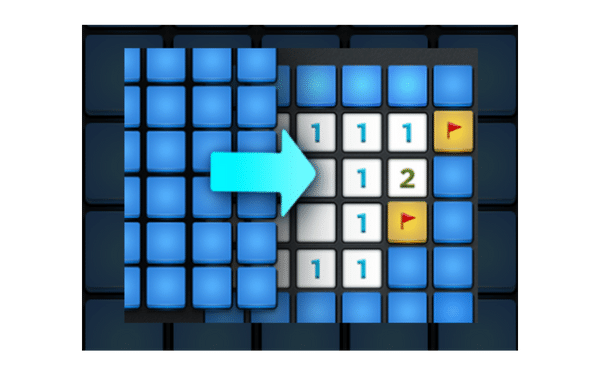
How to Get Better at Minesweeper
Once you start recognizing patterns quickly, the process of left-clicking every newly safe square becomes too slow. This is where the Chord action comes in.
How the Chord Works? Once you have correctly placed all the required flags around a number, you can simultaneously press the left and right mouse buttons on that number. The game interprets this simultaneous click as a command to automatically uncover all the remaining unflagged, adjacent squares. If your flags were correct, this saves you many individual clicks. If your flags were wrong, the chord will immediately set off a mine. I use this mechanic constantly because it’s the fastest way to sweep clear areas of the board.
Deal with the Guessing Problem
No matter how good your deduction is, Minesweeper deals are sometimes unsolvable through pure logic. You will occasionally be faced with a 50/50 situation where two remaining unrevealed squares touch a single number, and there is only one mine left to find between them.
My advice here is simple: Avoid guessing until you have exhausted every single possible logical move on the entire board. Only when the game locks up and no deterministic moves remain should you guess. When you are forced to guess, pick the spot that is most likely to open up a new large area, rather than just solving the immediate local conflict. A good guess should give you new information to continue the game, not just a coin flip to end it.
Game’s Origin
The game’s vast popularity isn’t due to some complicated history. While the earliest known computer versions appeared on platforms like Unix and OS/2 prior to 1989, the version of Minesweeper most people know and play was standardized and spread globally because of its inclusion in the Microsoft Windows operating system starting in the 1990s. This move made it an instant, free-to-play staple on nearly every personal computer, securing its status as the default logic puzzle game. Today, you’ll find the game readily available on most search engines and mobile app stores, including popular versions like Google Minesweeper.
When You’re Ready for Something Else
If you find yourself easily beating the ‘Expert’ setting, you can seek out custom boards with higher mine density or try one of the other popular variants like Clone (a reverse version) or Beast (a version with tougher deduction rules). If you enjoy the logical challenge of Minesweeper, you might like our list of the best online puzzle games for more brain-teasing fun.
